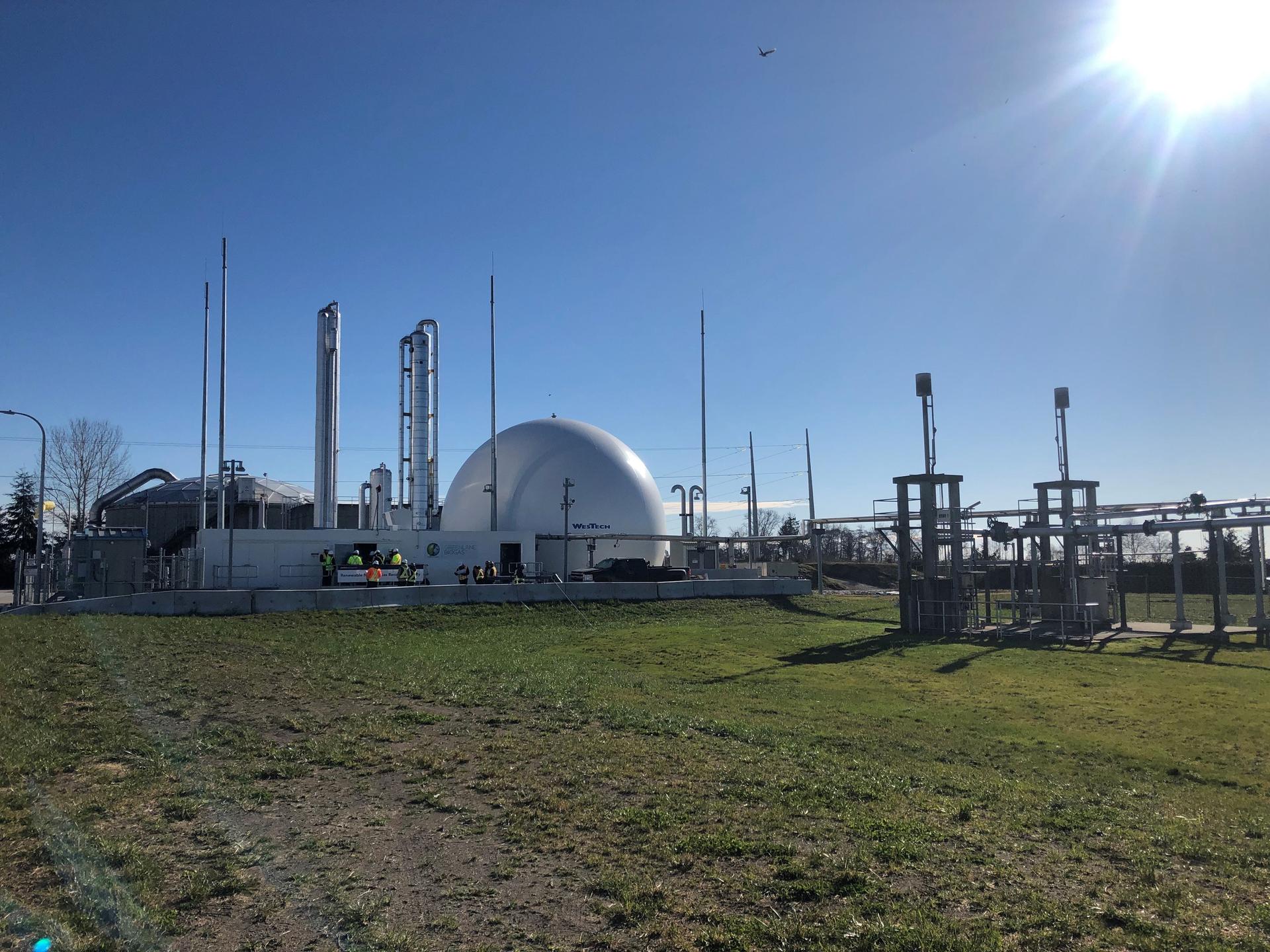
Turning biogas into financially viable biomethane
To reduce greenhouse gas (GHG) emissions and achieve a beneficial use for the surplus biogas created at the Lulu Island WWTP in Richmond, B.C., we helped Metro Vancouver to produce financially viable renewable natural gas for supply to the regional natural gas utility.
Lulu Island Wastewater Treatment Plant (WWTP) treats approximately 26 billion liters of wastewater annually and serves a population of around 200,000 people in Richmond, B.C. Around 50 percent of the WWTP’s biogas — a by-product of the wastewater treatment process — is used to provide process and building heating. The surplus biogas was being flared until 2022 whereupon Metro Vancouver began upgrading it into pipeline quality biomethane (renewable natural gas) and supplying it to FortisBC, a natural gas utility.
This case study details the design considerations and lessons learned during the delivery of a system that converts the biogas into renewable natural gas (RNG).
Considerations
Technology selection
To enable the injection of biogas into the utility’s grid, Metro Vancouver needed to clean and upgrade the biogas to RNG quality. Four technologies were evaluated against criteria including:
- Capital cost and lifecycle cost
- GHG emissions generation
- Ability to upgrade digester gas quality in compliance with FortisBC’s biomethane acceptance specification.
- Capacity
- Ease of operation and maintenance
Water scrubbing was chosen as the preferred solution due to its ability to consistently operate and produce RNG of desired quality with little operation and maintenance effort. Further, this method is chemical free, self-contained and environmentally friendly.
Digester gas production
Using historical process data we identified significant biogas flow variations that would result in disrupted operation of the biogas cleanup system. This challenge was overcome by adding a new membrane gasholder to stabilize the surplus gas flow and decouple the biogas cleanup system from the existing gas management system.
The new gasholder resulted in another benefit – added redundancy. When the main gasholder requires maintenance, the new gasholder can be used to eliminate system downtime.
Equipment layout
With regulations requiring the biogas cleanup system be located a minimum of 15 meters from the existing waste gas burners along with plans to expand the plant’s liquid and solid waste streams in future, there was limited space available to construct the new facility.
Outcome of installing the biogas cleanup system
The system has been consistently producing greater than 98% biomethane and is projected to generate 60,000 gigajoules of RNG for Fortis BC, enough to supply 600 typical homes. In 2022, the first full year of operation, flaring was reduced by 61% compared to previous years with no biogas cleanup system in place. The reduction in flaring has resulted in GHG reductions of about 2,500 tonnes of CO2 per year. This innovative project will more than pay for itself and contribute to regional environmental objectives all without subjecting the region’s sewer ratepayers to unreasonable financial risk.
Future projects will look at increasing available surplus biogas, thereby enhancing the Metro Vancouver’s return on investment in the biogas cleanup system and aiding the overall reduction in the WWTP’s carbon footprint.
Main contributors to Lulu Island’s WWTP’s successful biogas to RNG upgrade:
- Support from the Governing Metro Vancouver Board.
- The presence of surplus biogas that could be beneficially used.
- A positive business case throughout the planning, design and procurement stages.
- A staff champion to ensure this non-essential project wasn’t deprioritized.
- The existence of a natural gas utility who were interested in purchasing the RNG at a fair price.